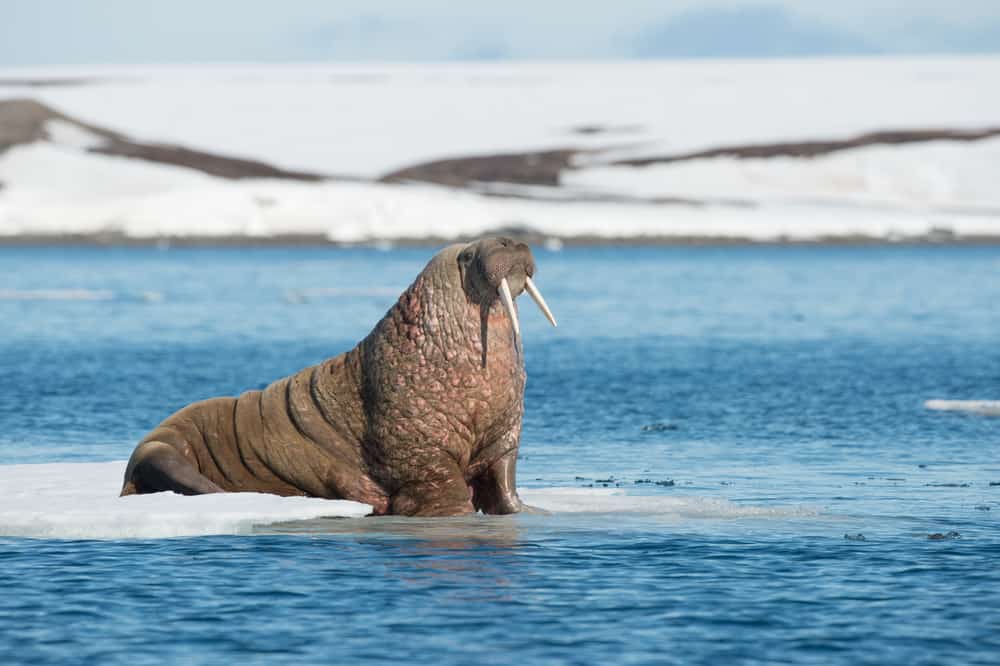It spends two-thirds of its life in the water, has whiskers, huge fangs, and a flabby, fatty body, impossible to forget. Do you already know what it is? Surely you do; walruses are another member of the Pinnipeds and are one of the fantastic semi-aquatic mammals. For what reason? I invite you to keep reading.
The Physical Characteristics of Walruses
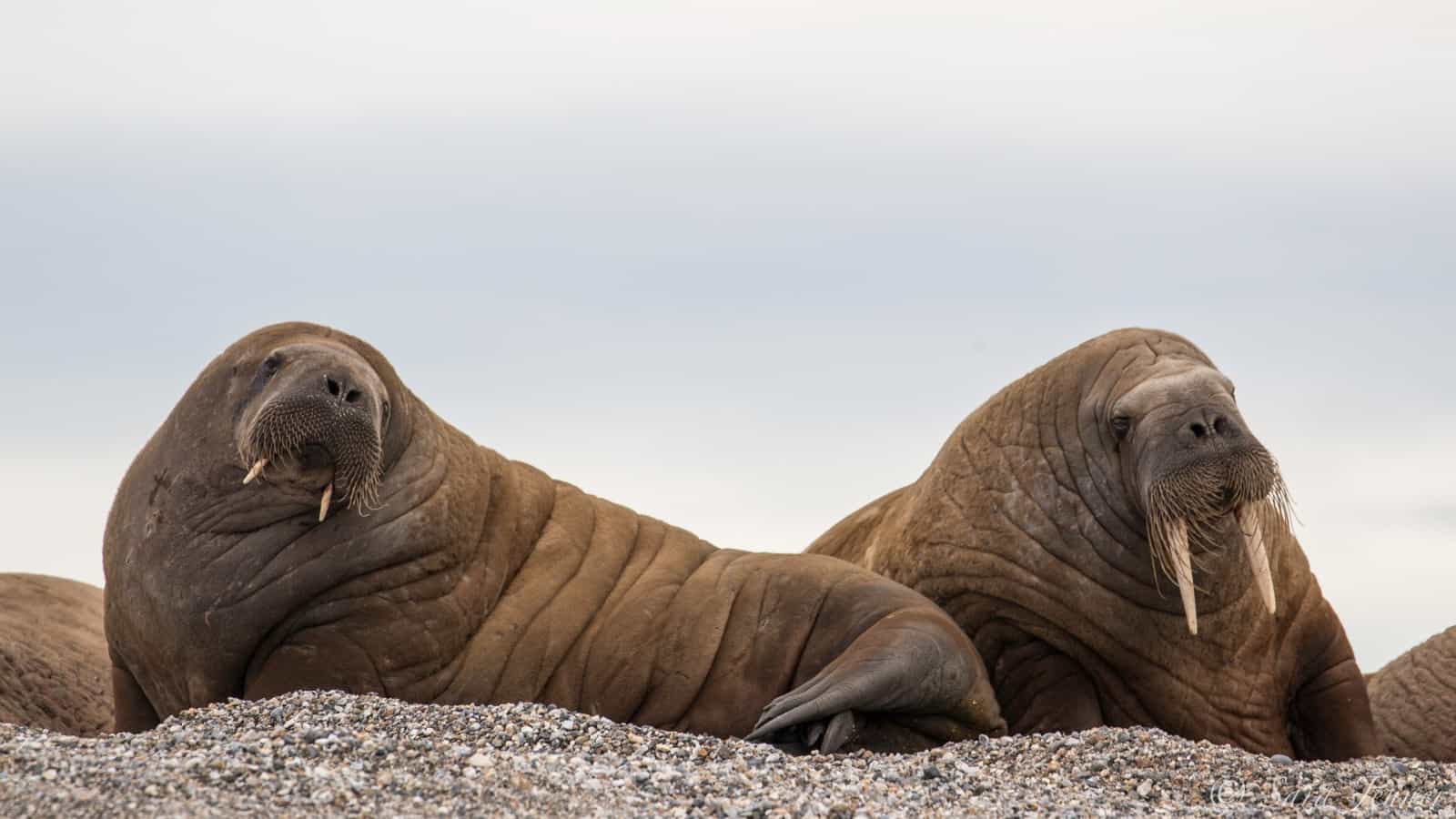
The Nature of the Walruses
Contrary to what their large size and strong fangs may appear to be, walruses are actually really friendly mammals; They love to be in herds and gather to sunbathe on the ice (up to hundreds of them do it together).
They are graceful swimmers of the ocean, moving their entire bodies to glide through the water. On average, a walrus can swim to a speed of 7 kilometers per hour and accelerate up to 35 kph. They are pretty skillful on land, running on four limbs; they can match the speed of a human running.
Females have their herds, as is the case of the males; these latter mentioned, when it comes to the dominant male, the walrus herd chooses based on its age, body size, and length of its fangs. Even though it is a friendly animal, it has its aggressive attacks during the mating season.
The Distribution, Habitat, Life Span of Walruses
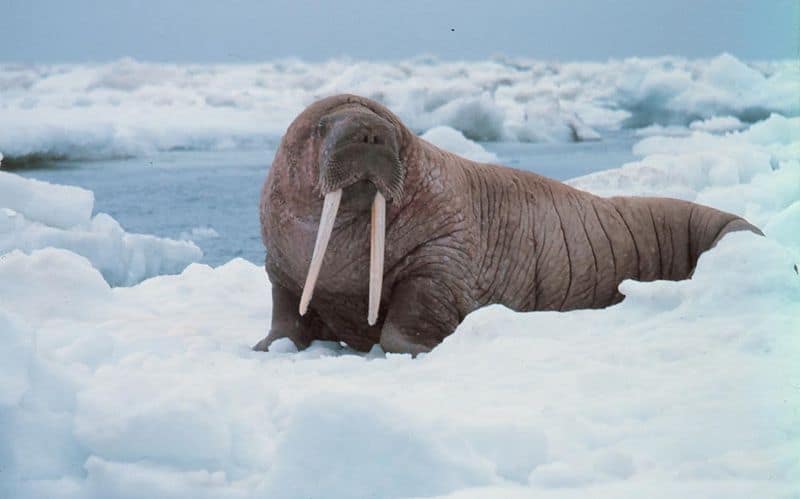
Walruses are animals of the Polar Circle. These are found in the North Atlantic and Pacific oceans and the Laptev Sea, located in the Arctic ocean. The species are conformed by two subspecies that differ or tend to distinguish lightly in their appearance, but even more because of their geographical location.
The Atlantic walrus, have their habitat in coastal areas ranging from northwestern Canada to Greenland, and the Pacific walrus settle in the North Seas off Russia and Alaska.
Thanks to their oily big, thick-skinned bodies, walruses can live comfortably in the arctic region. These animals are diurnal, spend most of their time in shallow water searching for food, and make various sounds, such as bellowing.
The mothers are incredibly protective of walrus calves; they take their calves with their fins and place them on their chest whenever they feel in danger, similar to what a mom does with her baby. This protective instinct may be due to the fact that walruses infrequently give birth to young. Their estimated lifespan is 30 years.
What Do Walruses Eat?
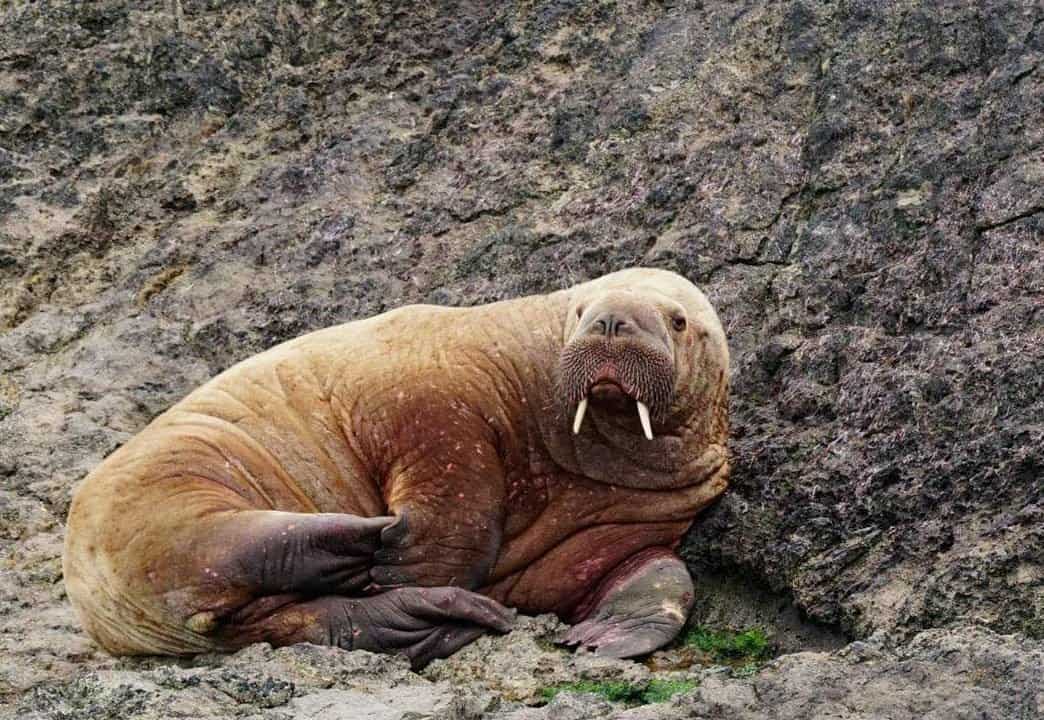
Walruses are carnivore animals, but they are not a fierce predator, and even though they love to eat, they hunt exclusively to survive. These marine mammals’ diet is composed of small marine creatures that can be found when diving in the water, using their detector whiskers.
It is estimated that this feeding process takes place 80 meters at the bottom of the surface. Although most of the feeding takes place between 10 to 50 meters; as walruses are foraging predators that feed on a variety of invertebrates, it is normal that in their diet, we find foods such as:
- Shellfish
- Shrimp
- Worms
- Soft shell crabs
- Mollusks
- Snails
- Clams
- Pulses
- Slow fish
- Polar cod
- Gastropods
- Sea cucumbers
- Soft-bodied animals
In the same manner, although they are not cannibalistic animals, it has been observed that walruses rarely hunt seals in order to feed (the bigger males are the ones who tend to do this). In this type of case, the walruses’ diet consists of eating ringed and bearded seals.
On the other hand, it has also been seen that walruses eat the bodies of seals or other marine animals of good size, but this only occurs when their food source starts to dwindle.
What Do Baby Walruses eat?
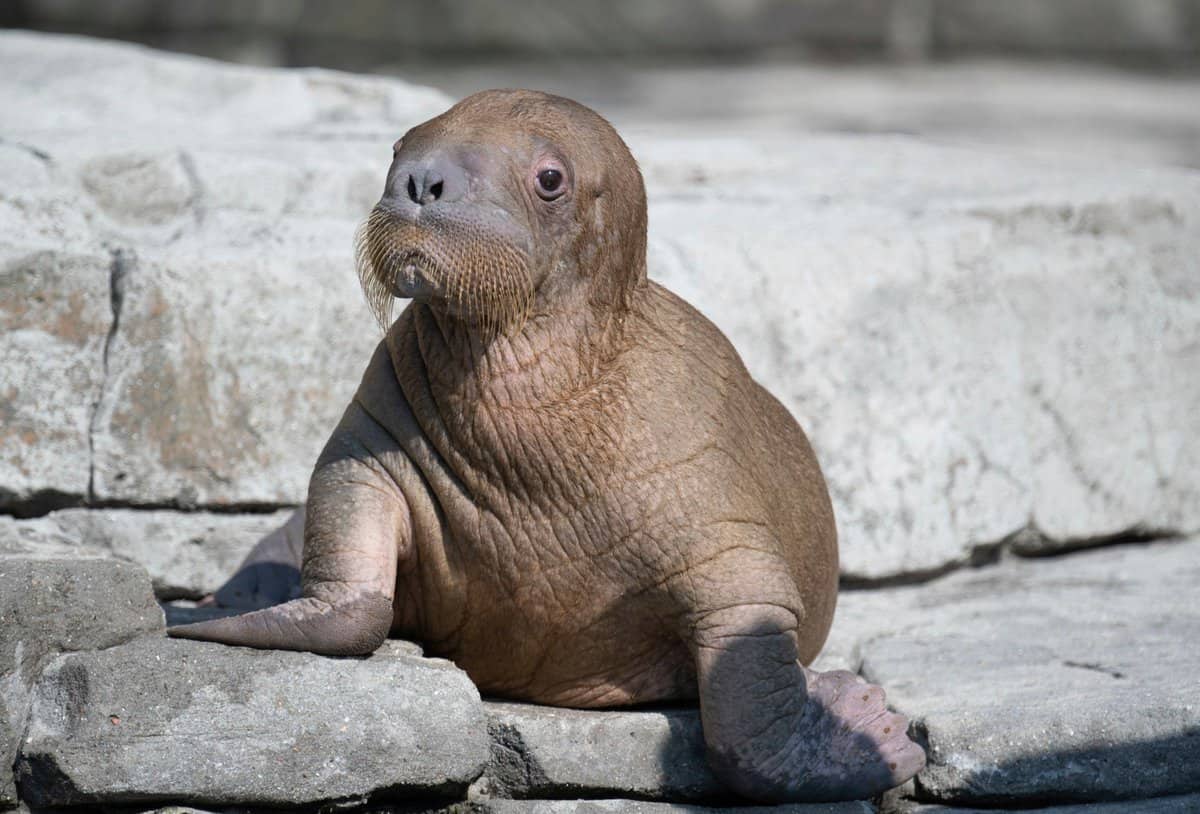
At birth, baby walruses have to go through a breastfeeding period; during this time of breastfeeding, the baby seal or calf usually takes its mother’s milk in the water; but sometimes, there are baby walruses that feed when their mom is dragging it through ice or land.
After this period, baby walruses grow their characteristic whiskers, so they can start eating some crustaceans, benthic, and cephalopods.
How Much Do Walruses Eat?
According to the observation of these animals, it has been found that adult walruses eat an average of 6% of their body weight per day. For this, they fill their stomachs twice a day. Likewise, grown-up walruses can ingest about 3000 to 6000 clams in just one feeding session.
This amount of food depends on the time of the year, since in the summer months, during their migration toward the south in autumn, these animals dedícate most of their time searching for food. But eat less when they migrate to the north in spring.
In addition, during mating season, males reduce their food drastically, which also happens with the females but during their period of pregnancy.
How Do Walruses Hunt?
Since they like to eat food found on the ocean floor or among rocks and algae, walruses are constantly seen in turbid waters. To find food in this environment, walruses will rely on their whiskers.
So, for this, the animal, moving its snout along the bottom, scavenges the entire area with its natural detector. But on the other hand, it has also been observed that some Atlantic walruses rapidly flap their front flipper in order to reveal prey on the seabed.
Another technique used for this is to take a mouthful of water and throw strong jets to the bottom of the sea so that they can find invertebrates, especially clams. It is worth noticing that walruses do not chew their food, but there are small occasions in which they have squished or crushed clam shells. Since they do not chew, they also prefer soft-bodied foods; in these cases, the walruses suck the skin of the animal.
In Conclusion
Do not let their long fangs intimidate you; actually, they do not use them for hunting but to defend and protect themselves from attacks of their predators and in territorial confrontations with their own. Once upon a time, walruses were victims of indiscriminate hunting of their species, but today this has been greatly counteracted.
Nevertheless, the weather change is a significant danger for this friendly and kind animal, who has to go through the fact that its habitat is disappearing; that is why, if you are a fan of this animal, I invite you to fight against global warming, since it is the best way that you can help the walruses.
F.A.Q
Do Walruses Eat Polar Bears?
No, walruses are carnivorous animals, but they only eat small aquatic creatures. On the other hand, the polar bear is known to be one of the few walrus predators. The latter has made great hunts of walruses through the implementation of its powerful brute force.
In addition to walruses, polar bears also hunt seals and sea lions, so the walrus is not the only pinniped at the expense of the polar bear’s claws and power.
But, it is worth mentioning that walruses are full of muscles and large tusks, so, although their first reaction is to flee from polar bears, if they feel cornered or are with their cub, they will fight to inflict maximum damage to their attacker.
Do Walruses Eat Seals?
Yes, but this is not usual; they usually leave them out of their feeding menu. But some large males, however, have the habit of adding seals to their main dish.
What Is the Walrus’ Favorite Food?
When it comes to walruses’ favorite snack, there is only one answer: clams. They are by far the favorite food of these portly social animals. They consume them in large quantities on a constant basis.
